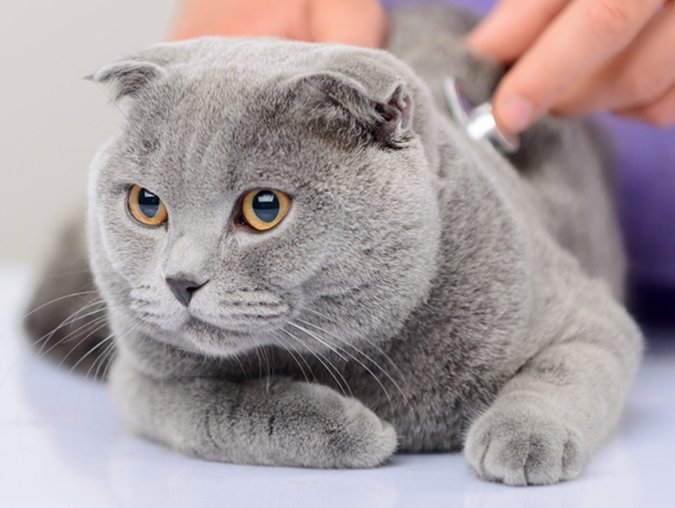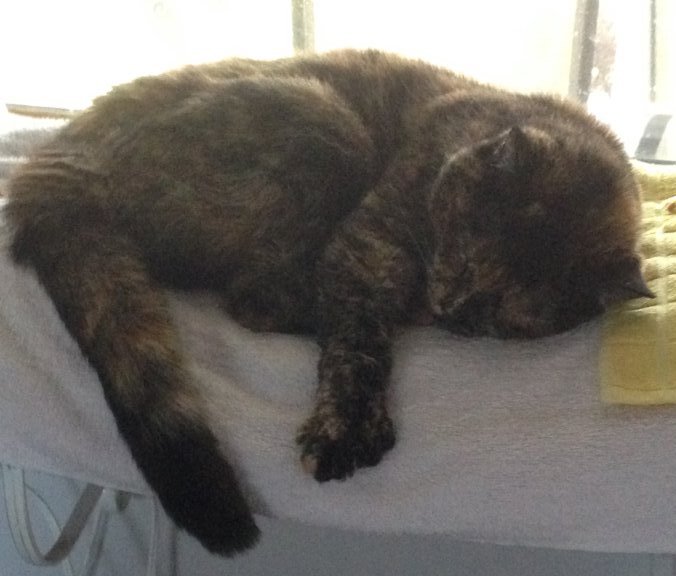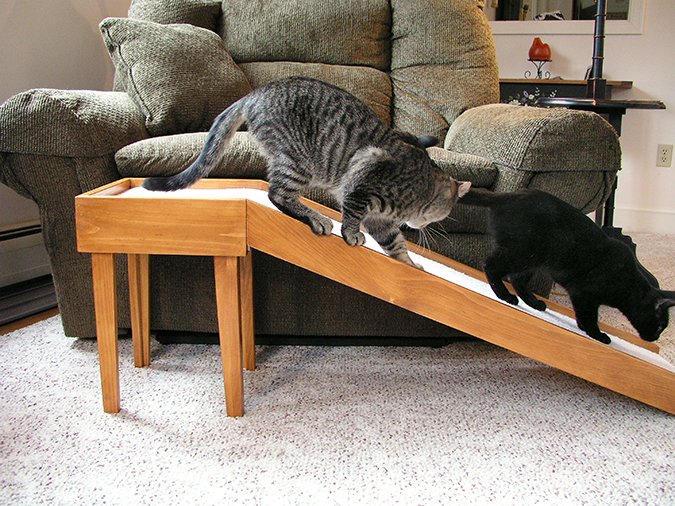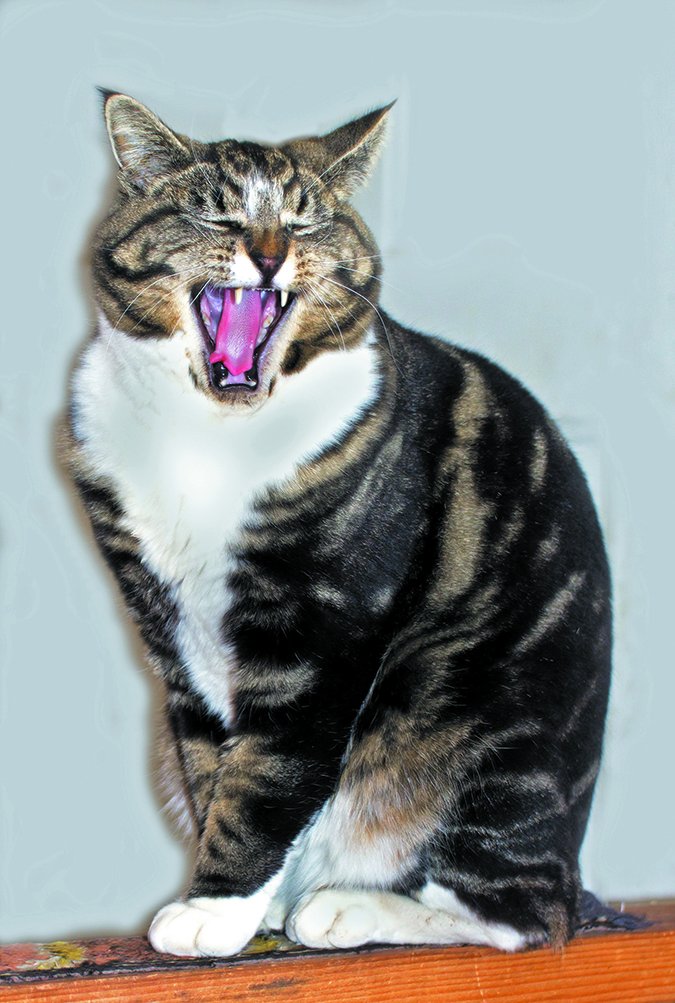Thanks to advances in veterinary medicine and more cats living safely indoors, a greater number are achieving senior and even geriatric status than a generation ago. It’s no longer unusual for cats to reach the age of 20 — equivalent to a 96-year-old person — and beyond. But the added years can come with a price:
Some cats develop cognitive dysfunction syndrome (CDS), similar to Alzheimer’s disease in humans. One-third of cats 11 to 14 years old have CDS, with the incidence rising to 50 percent for those 15 years and older.
Bigstock

Early Recognition
“We are trying to recognize cognitive dysfunction earlier and more often rather than accepting changes as ‘just being old,’ ” says Brian Glenn Collins, DVM, Section Chief of the Community Practice Service at Cornell University College of Veterinary Medicine.
How can you determine why your cat is slowing down? The only way to diagnose CDS is a post-mortem examination that demonstrates the presence of a protein called beta-amyloid that destroys brain cells.
“Signs of cognitive decline are often subtle in the early stages,” says Pamela Perry, DVM, Ph.D., a resident in animal behavior at Cornell. “Sensory decline occurs with aging, as does memory loss and reduced learning. However, these signs should not necessarily be dismissed by attributing them to ‘normal aging.’ Any change in a pet’s behavior should prompt a veterinary examination to address the behavior and rule out any underlying medical causes.”
One problem in distinguishing between aging and CDS is that many of its signs overlap with other medical conditions, says Leni Kaplan, MS, DVM, a lecturer in the Community Practice Service. “For example, some cats will start urinating outside the litter box. This could be because they are too painful to walk to the litter pan in the case of a medical condition such as arthritis, or it could be due to cognitive dysfunction.”
Dr. Pamela Perry

However, a consensus among key veterinary associations, including the American Veterinary Medical Association and the American Association of Feline Practitioners, has emerged about a collection of clinical signs known as DISHA. Here’s what the acronym means and the impact on cats with CDS:
D is for disorientation.
Your cat appears to be lost in the corners of the living room, staring before slowly moving away.
I is for altered interactions with people and/or other animals.
Your cat may withdraw from you or no longer rush to greet houseguests. On the other hand, Dr. Perry points out, some older cats become more affectionate.
S is for sleep-wake cycle changes.
Your cat who used to sleep peacefully at the foot of your bed is now awake at night, wandering, pacing and howling. Some cats may sleep longer in the day.
H is for house soiling.
Your cat who used the litter box 100 percent of the time now defecates or urinates outside it or on rugs or in open boxes in your closet. Memory problems may play a role.
A is for changes in activity.
Your cat no longer displays kitten-like energy or interest in chasing a favorite feather wand down the hallway.
Other telltale signs of CDS are increased irritability, aggression and diminished appetite. Normal signs of aging generally include more easily recognizable physical signs, such as diminished hearing or vision, pain and decreased mobility due to osteoarthritis, loss of muscle mass, thinning hair, more fragile skin, constipation and urinary or fecal incontinence. You may notice a clouding of the lens (known as nuclear sclerosis) or cataracts in your cat’s eyes.
Medications and supplements used to treat CDS include S-Adenosylmethionine (SAM-e), known for anti-aging properties in humans; phosphatidylserine, used in human medicine for attention deficit hyperactivity, Alzheimer’s and depression; B vitamins; ginkgo biloba and resveratrol, plant compounds thought to have antioxidant properties. Be sure to check with your cat’s veterinarian before giving any supplements.
Drugs to Avoid
Veterinarians may also recommend supplements containing apoaequorin, a natural calcium-binding protein, and therapeutic diets that contain antioxidants. “But there are certain drugs to avoid, such as some pain medications, anesthetic drugs and perhaps even supplements containing iron,” says Dr. Collins. “Iron is an oxidant and can cause constipation.”
Veterinary schools and practicing veterinarians today are devoting more attention to aging in pets. “Their caregivers are interested in providing as much as they can to make their time together longer and of higher quality,” Dr. Collins says. “We are focusing more on primary care and preventive medicine, with a larger amount of this effort being dedicated to our older pets.”
Owners can do their part by booking twice-yearly rather than annual wellness exams for their cats when they reach the age of 7. “A year is a large percentage of a cat’s lifespan, and a lot can change from one year to the next,” Dr. Collins says. “Earlier detection of disease and early intervention can result in a better prognosis and a longer lifespan for an aging pet.”
Common Problems and Clever Solutions
Pet Classics

No matter the cause of your aging cat’s altered behavior, you can make life easier for him. Here are some common problems senior cats face and recommended adjustments:
1. Inability to jump on the sofa or bed.
Solution: Position a pet ramp at the sofa and at the end of the bed. “Ramps or small stepping stools will help cats continue to socialize/interact with their family and environment as they did before arthritis or other physical ailments developed,” Dr. Kaplan says.
2. Failure to use the litter box.
Solution: Replace standard size litter boxes with low-level litter boxes and position them on each level of your home.
3. Bumping into furniture or getting lost in a room, especially at night.
Solution: Install nightlights to provide enough illumination to find the kitchen, bathroom and your bedroom.
4. Unable to navigate wooden or tile floors without slipping.
Solution: Provide traction in high-traffic areas your cat frequents by placing carpet runners or even yoga mats. “This keeps cats more active and stimulated rather than having them sit in one area for fear of falling or injuring themselves or feeling unsteady,” Dr. Kaplan says.
GraphicStock

5. Not spending as much time with you, hiding under beds or in closets.
Solution: Seek out your secluded senior cat and gently brush his coat, treat him to a five-minute head-to-tail massage and speak in a soothing manner. “It is good to include some stimulation in the form of new toys or rotating toys from time to time,” Dr. Collins says.
6. Vocalizing and not sleeping soundly.
Solution: Provide comfortable places to sleep in different rooms. Consider pet-safe warming discs or blankets for older cats with thinner coats and skin to help them stay warm. “I don’t recommend medication for sleep per se,” Dr. Kaplan says. “I recommend that the pet be examined by a veterinarian to rule out medical causes of poor sleeping such as pain or discomfort. If older cats are having anxiety or cognitive dysfunction syndrome and not sleeping well, we may try an anti-anxiety medication that will help them relax and hopefully sleep restfully.”
7. Decreased grooming.
Solution: Comb and brush your cat daily to keep his coat shiny and mat-free.
It’s also vital to maintain a regular household routine. “It is not ideal to change things in the home too much,” says Dr. Collins. “Try to keep furniture in familiar places.”
Aging cats tend to feel less stressed when they can count on meals served at specific times. If you can’t be home at breakfast or dinner, a pet food dispenser can dole out meals at specific times.



